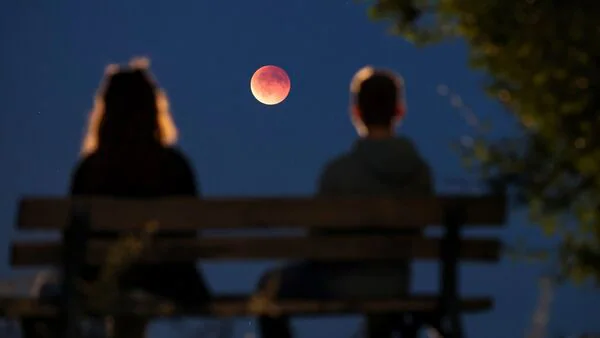After 7 Years, India Witnesses Blood Moon: When Will The Next One Occur?
A total lunar eclipse takes place when the Sun, Earth, and Moon align in a straight line, with Earth blocking sunlight from directly hitting the Moon. Explaining the crimson glow, Ryan Milligan, astrophysicist at Queen's University Belfast, told AFP:“The Moon appears red during lunar eclipses because the only sunlight reaching it is reflected and scattered through the Earth's atmosphere. Blue light is scattered more easily than red, leaving the Moon with its iconic 'bloody glow'.”
Also read | Full Moon in September 2025: Everything about Corn Moon, timing, visibility, and more
When can India see the next 'Blood Moon'?India had to wait seven years for this eclipse , but the next one won't take as long. The country will once again witness a nationwide total lunar eclipse on December 31, 2028, giving astronomy enthusiasts another opportunity to marvel at the rare event.
Also read | Lunar eclipse in Bengaluru today: Timing, when and where to watch
How significant was Sunday's eclipse?This was the second“Blood Moon” of 2025, following the one in March. It was also the longest such eclipse since 2022, making it a night to remember for both scientists and casual stargazers alike.
Read | Chandra Grahan 2025: Partial phase of lunar eclipse begins in THESE cities, blood moon to peak at 11.48 pm
What is lunar eclipse?A lunar eclipse is an astronomical event that occurs when the Moon moves into the Earth's shadow, causing the Moon to be darkened. Such alignment occurs during an eclipse season, approximately every six months, during the full moon phase, when the Moon's orbital plane is closest to the plane of the Earth's orbit. This can occur only when the Sun, Earth, and Moon are exactly or very closely aligned with Earth between the other two, which can happen only on the night of a full moon when the Moon is near either lunar node. The type and length of a lunar eclipse depend on the Moon's proximity to the lunar node.
The total Lunar Eclipse commenced at 8.58 pm across India and lasted until 2:25 am.
Legal Disclaimer:
MENAFN provides the
information “as is” without warranty of any kind. We do not accept
any responsibility or liability for the accuracy, content, images,
videos, licenses, completeness, legality, or reliability of the information
contained in this article. If you have any complaints or copyright
issues related to this article, kindly contact the provider above.
Market Research

- Gas Engine Market Analysis: Strong Growth Projected At 3.9% CAGR Through 2033
- Daytrading Publishes New Study On The Dangers Of AI Tools Used By Traders
- Excellion Finance Launches MAX Yield: A Multi-Chain, Actively Managed Defi Strategy
- United States Lubricants Market Growth Opportunities & Share Dynamics 20252033
- ROVR Releases Open Dataset To Power The Future Of Spatial AI, Robotics, And Autonomous Systems
- Blackrock Becomes The Second-Largest Shareholder Of Freedom Holding Corp.



















Comments
No comment